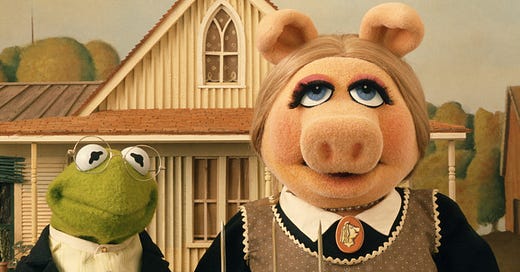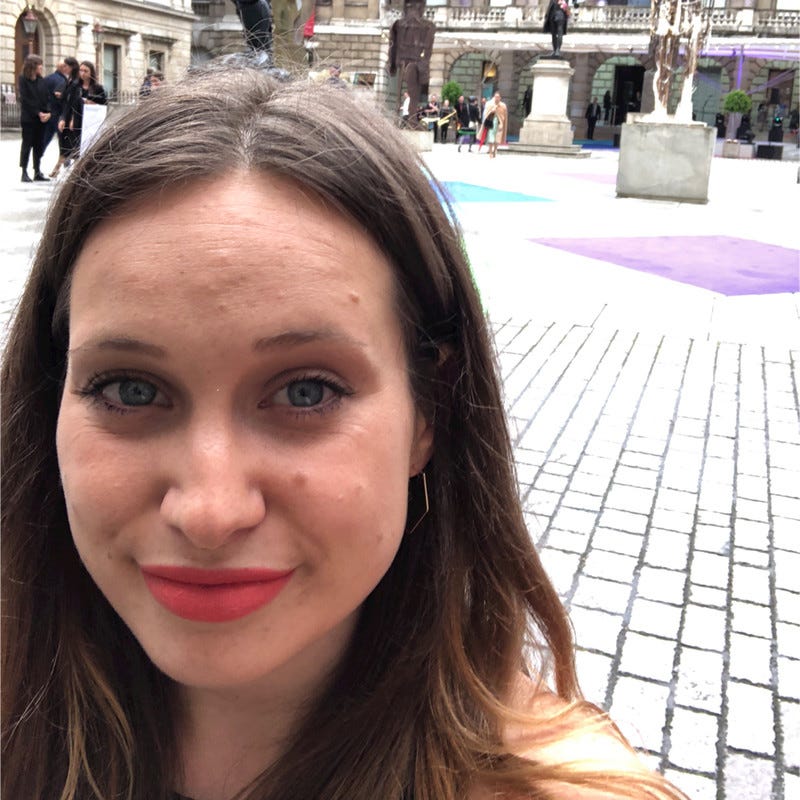Cultural Content: Louise Cohen on content strategy
The award-winning former head of content strategy at the Royal Academy of Arts
Good afternoon all.
We're delighted to welcome Louise Cohen not only to this newsletter, but also as part of our growing content team at One Further!
Louise was Head of Content Strategy at the Royal Academy (and acting Head of Digital). Her digital content strategy there was one of the first in the field, and won a GLAMi at Museums and the Web in Cleveland in 2017. Here she talks us through how she sees content strategy in the cultural sector, and some of her favourite examples from her time at the RA.
Hello content friends, I hope you’re all well.
Today I’m going to share with you a couple of content examples from my years at the RA – a more journalistic route, involving Miss Piggy, and a Twitter initiative, involving a ham. I should add that pig-theming is not typical of my content strategy approach, although if that’s what the audience wanted and needed, then I’d be all over it.
The unexpected influencer
A humble article from a little way back, this remains one of my proudest and weirdest achievements – tracking down the former Creative Director of the Muppets in Bermuda, and getting him to write about his Kermit-Piggy version of American Gothic.

The much-parodied Grant Wood work was coming to the RA, and our strategy was to lean in hard to that parody angle. Partly because parodies are fun, and people like fun. But most importantly, because the parodies of this deadpan painting are undeniably a reason our audiences were interested in it – and a fundamental of our recent content strategy had been to meet users where they were, and generally try to stop fighting the universe.
It was also great way to fill our channels with wider cultural references, and to reach all their audiences too (content strategy side note: I always like to use a subject as a jumping off point to look outwards – don’t be a dinner party dud and talk about yourself all the time). So, we invited visitors to recreate their own #AmericanGothPic on Twitter, and we did a fun list piece on the most parodied works of all time.
And then there was the magical Michael K. Frith – also, incidentally, the creator of the Miss Piggy character – and his Muppet version of the painting, created as part of a genius book of Muppet masterpieces. I could write all day about how heart-breaking I find Kermit’s stoic, resolved little face, and Piggy’s solid, sultry eyes from behind the pitch-fork. And those sorts of details are actually relevant, because to create it – and it was a physical puppet-and-set tableau, by the way – Michael had considered the original work in incredible detail. That’s what made his perspective so valuable to us, and why I love this piece. It leads audiences in with these fun, familiar faces (not a coincidence that Muppets are perfect nostalgia for a target demographic), and then engages them deeply with the work, through Michael’s unique view on it. Who knew – Miss Piggy, the ultimate influencer.
The low barrier
This one was a product of lockdown, and all-credit to the great Adam Koszary – the RA’s then Social Media and Content Manager – for coming up with, and executing, something that was just exactly what so many people were looking for, as they sat sadly at home, swearing at their rubbish banana bread.
Like all arts organisations suddenly faced with closure, we had to do a rapid pivot in our content strategy, to provide ongoing engagement remotely. With nothing immediately to market, it was an interesting opportunity to focus purely on content that our audiences would enjoy 🤯. Having live-streamed life drawing classes in 2017 and 2018 – yeah, way before it was lock-down cool – we knew that our audiences tended to jump on the chance to be creative, although many were not experienced artists and could be shy.
Enter the #RADailyDoodle, a daily drawing challenge on Twitter – but importantly, one that was delivered with such warmth and wit that there could be no doubt that it was just for fun, and that YOU were welcome to be part of it. Kicking off with an invitation to draw the best ham, The Daily Doodle saw the RA double its new social media followers during the period and pick up coverage in The Times, the Telegraph and the New York Times. It was also a great minimum viable product for road-testing remote participation during lockdown, and with the Learning team we went on to develop a series of Saturday Sketch Clubs.
But most importantly, so many happy people tweeted drawings, and thanked us for the chance to exchange hams with each other. It was just lovely.
Signoff
So there we are. Now, I hope it’s clear that my team didn’t just fling around Muppets and hams at our whim – they have to serve a purpose and be relevant and right for the organisation and what you’re trying to do. And we did have some interesting “discussions” about what was “right for the organisation” over my seven years at the RA… But in my mind, “museum content” has no fixed definition at all. It can be anything. Just find a way to make something that people want. And then show the curators how much people liked it.
If you have any questions or want to chat about content strategy for your organisation, do get in touch – you can find me at louise@onefurther.com (or follow me @louiseacohen on Twitter or Instagram).
While we have your attention, if you haven’t added your voice to our Cultural Content Survey now is the time to do so. We’ve already heard from organisations such as the American Museum of Natural History, the Ashmolean Museum, Artichoke, Cheltenham Festivals, Horniman Museum, Kiln Theatre, Midlands Arts Centre, Rambert and many more.
It only takes about ten minutes, and people have told us it’s actually quite thought-provoking and helpful:
You’ll be in with a chance of winning some books, plus we’re planting trees and donating to Ukraine for each valid survey response.
Thank you!







